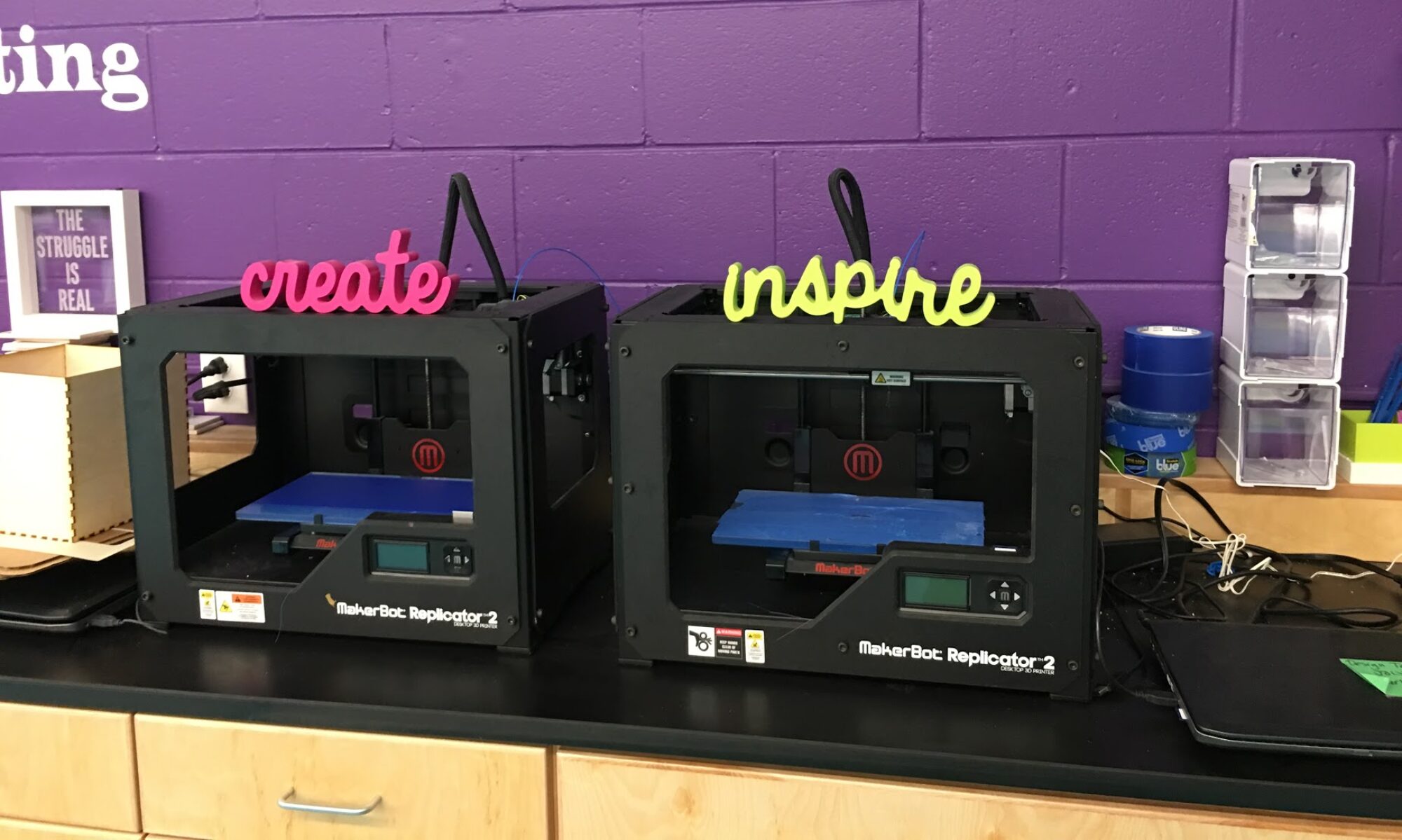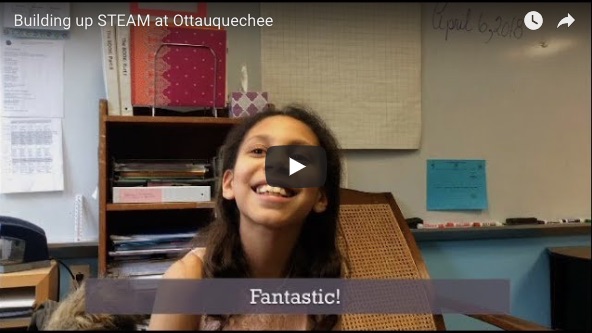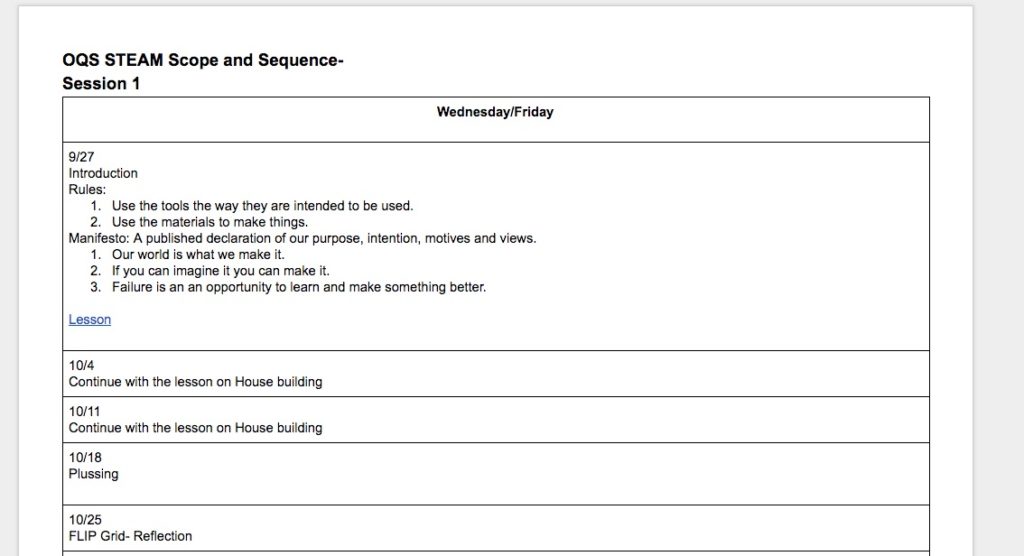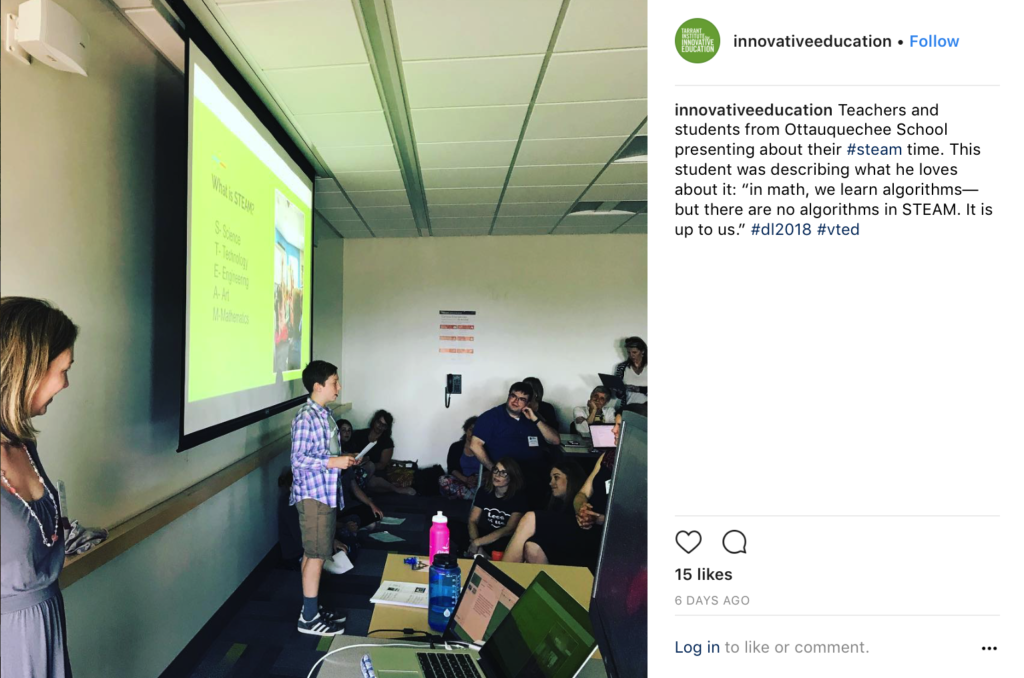Making time for making at Ottauquechee
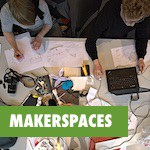 STEAM — Science, Technology, Engineering, Art and Mathematics — gives students the opportunity to create. To make. Maybe to fail. To try again! And to make something that improves a condition, solves a problem, or makes the world a better place. But if your school currently doesn’t offer a STEAM time, it can be daunting to figure out where to begin. And that’s where we pick up our story of Ottauquechee School, in Quechee VT, where we used Design Thinking, a portable makerspace and one amazing library space to figure out how STEAM Time could work at this school.
STEAM — Science, Technology, Engineering, Art and Mathematics — gives students the opportunity to create. To make. Maybe to fail. To try again! And to make something that improves a condition, solves a problem, or makes the world a better place. But if your school currently doesn’t offer a STEAM time, it can be daunting to figure out where to begin. And that’s where we pick up our story of Ottauquechee School, in Quechee VT, where we used Design Thinking, a portable makerspace and one amazing library space to figure out how STEAM Time could work at this school.
Welcome to Ottauquechee STEAM Time.

Why STEAM Time?
This time was created as a way to promote the creation of a portable Makerspace at Ottauquechee School to introduce students to STEAM and give teachers time to co-plan instruction for their classes. Deep hands-on learning while creating time and space for teacher collaboration. A double whammy!
I planned this work in collaboration with the principal, Cathy Newton, and the librarian, Rebecca Whitney. Cathy and Rebecca lead the time with students, which happens for 45 minutes per week, grades K through five. STEAM time runs on Wednesday and Friday, with Wednesday focused on primary students, and Friday focused on intermediate grades. This allows us to go deeper into skills and design thinking with each higher grade level as the week progresses.
Tying STEAM to Design Thinking
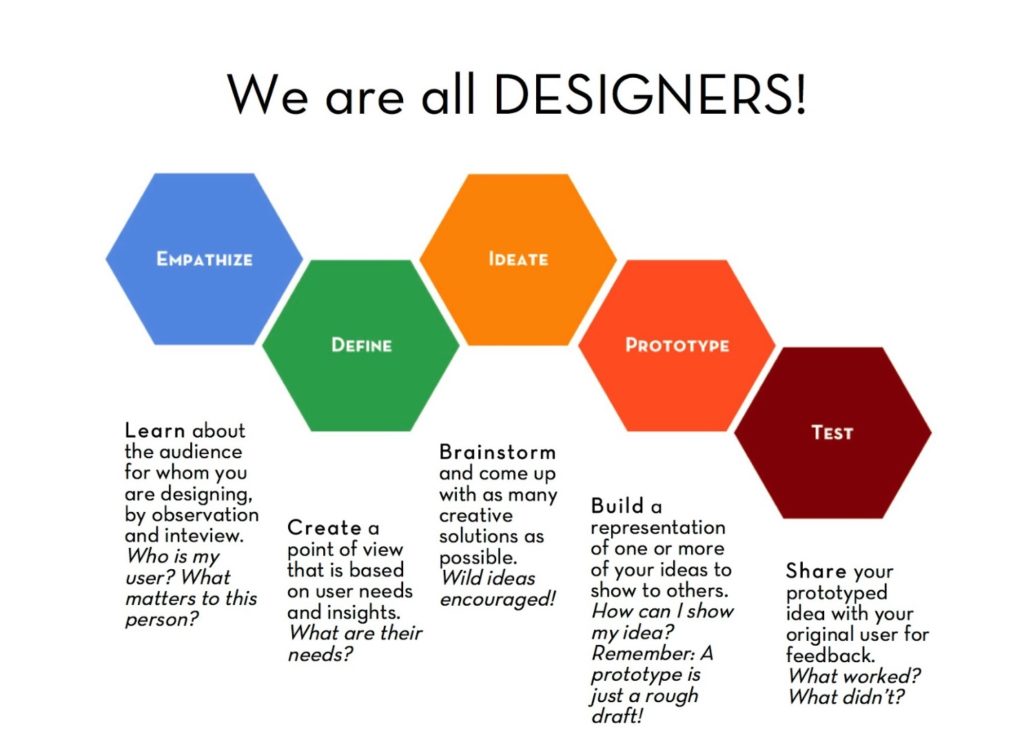
It was clear that for STEAM Time to be meaningful, it needed to be rooted in purpose. We asked students to think: if you’re going to build a robot, what problem will your robot solve? Who will it help? The missing piece can often be: EMPATHY. So, we go to Stanford’s Design Thinking elements as a guideline for everything we do in STEAM time. Students worked through Stanford’s five phases — Empathize, Define, Ideate, Prototype, Test — during each STEAM time, with a shared theme. This guided the work and created purpose and meaning. At the same time, we were mindful to make sure VT’s Transferable Skills were invoked at every step of the way.
A tall order, but one the students took in stride! Here’s an example:
Sample STEAM unit: Fairytale Engineering
One of the most popular units we did to bootstrap STEAM Time was Fairytale Engineering. We asked students to take some familiar fairytales and use STEAM to solve some of the problems in the stories.
- Empathize: Principal Newton read students a story showcasing a classic fairytale, and asked them to consider the story from various viewpoints.
- Define: Then students paired up to ask each other, “What did you see?” They examined what types of problems they believed the characters in the story faced.
- Ideate: One of the features of the Ottauquechee library space is the whiteboard tables. So next students had time to specifically draw all over those tables and just freeform brainstorm ideas for ways engineering or creating could help the characters in the story solve their problems.
- Prototype: To the making! Students chose a project to work on with the making and art supplies.
- Test: Well, and also present. That’s a huge part of it for learners. Students presented their prototype to the rest of the class for feedback.
For instance, some students worked on how to rehabilitate the witch in Hansel and Gretel. Other students worked out ways Jack could carry his golden eggs to safety. And other students designed ways for Rapunzel to safely leave her tower without having to get married.
After the unit concluded, Principal Newton asked the students to reflect on how it all went. Students marked up butcher paper listing three guiding principles, or they hopped on Flipgrid and record a video reflection. Or both!
How we did it
In a nutshell, this took a lot of passion, planning and flexibility. A big part of making the work successful was having adequate staffing; Principal Newton cleared two afternoons per week — PER WEEK — in her schedule to devote to this project, and Ottauquechee is lucky enough to have a library media specialist who was more than willing to make STEAM Time a priority. But in addition, we did some fundraising for the making materials. We asked for family donations and pulled together a core group of volunteers. We also raised money at our Scholastic Book Fair and ran a Donors Choose campaign. You can grab a copy of our Scope and Sequence doc right here.
We also shared this work at Vermont’s Dynamic Landscapes conference, bringing along eight students in grades three through five to share their experiences. And we were overjoyed when the room quickly filled. By the time the students began presenting, it was standing-room only.
Hearing the students reflect on STEAM time fuels us to continue this movement. We learned a lot this year and are ready to build on that to develop another year of making with a purpose in our STEAM program at Ottauquechee School.
